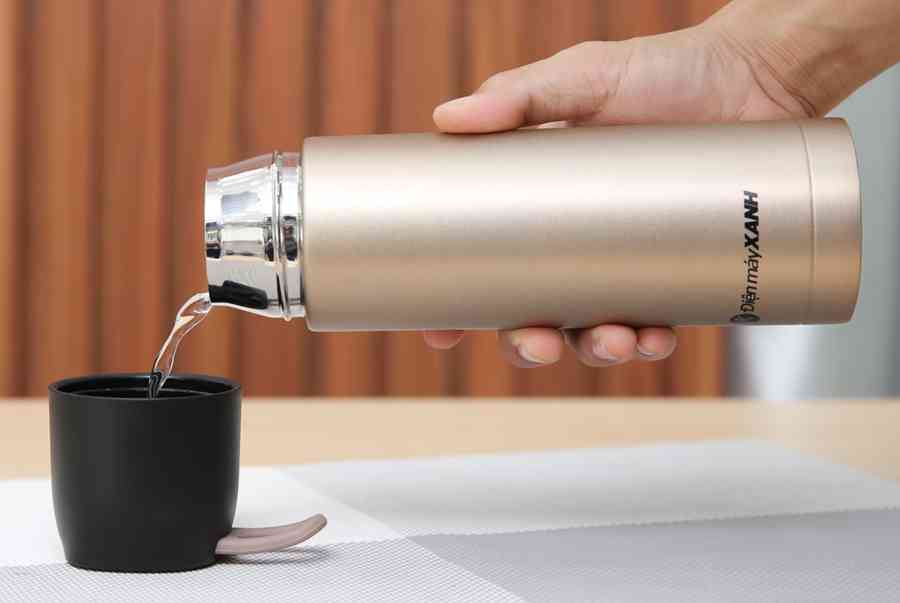Research Project for the 2011 Alaska Region National Ocean Sciences Bowl | Alaska Ocean Sciences Bowl
This paper was written as part of the 2011 Alaska Oceans Sciences Bowl high school competition. The conclusions in this report are solely those of the student authors.
Mục Lục
Climate Change
Authors
Team Tidal Waves
Introduction
Climate change is a long-term significant change in the weather patters of a geographical area, or in the case, the world’s oceans. Climate change can be natural or caused by changes people have made to the land or atmosphere. It has become perhaps the most complicated issue facing world leaders. Scientists have been looking to the oceans due to their changing heat content. Climate temperatures have been gradually warming world wide making the world unbalanced. There are many concerns for the animals, the plant life, the oceans, and for the world itself. Although global warming seems to be taking its toll, there is numerous ways to prevent it or at least slow it down.
Climate Change and the World’s Oceans
When scientists say the planet is warming, they usually point to rising air temperatures as evidence. That is reasonable enough, the warmth of the air temperature affects us directly and we feel the change the scientists are measuring. However, it is also misleading: while the lower atmosphere has been gradually warming over the past 50 years, it happens unevenly, rising sharply for a year or two or even ten, then flattening out. The stutter step pattern is due to relatively short-lived effects on top of the general warming. An example of this is the El Niño current (strong, warm winds that come from the ocean) in the Pacific making air temperatures warmer, or a volcanic eruption like 1991’s Mt. Pinatubo, producing a cloud of dust that makes air temperatures cooler. Over time, these cancel out, and it can be tempting—though incorrect—to think a temporary flattening means global warming has stopped.
To get a measure of what’s truly going on, scientists look to the oceans, which are slow to heat up, slow to cool down, and thus less prone to short-term variations. “About 80 or 90 percent of the extra heat absorbed by the planet is absorbed into the oceans (Lemonick).” Over the past couple of decades the oceans’ heat content has changed. The result, appearing in the current issue of Nature, will give little comfort to those who deny climate change: the oceans have been warming unavoidably since at least 1993, at a rate broadly consistent with what you would expect from the buildup of greenhouse gases. The signal of global warming is about six times larger than any doubts. In particular, the so-called “global cooling” climate skeptics claim has been going on since 1998 doesn’t show up. Ever since 1998 the weather has warmed significantly. Then again in 2003, the warming starts to become stable, but that may have to do with things going on in the deep ocean. The sensors involved in the latest research go down only to about 2,300 feet, which is roughly half the average depth of the world’s oceans. The upper and lower ocean exchange heat just as the ocean and atmosphere do. Nobody really knows what’s happening near the bottom. Over the past couple of months, two climatologists at the National Center for Atmospheric Research in Boulder, Colorado published a paper in Nature suggesting that some of the extra heat trapped by greenhouse gases has gone missing. They both stated that it might be hiding in the deep oceans. As the oceans warm, they expand; up to half of the rise in sea level comes not from melting glaciers or disappearing ice caps, but from the physical expansion of seawater as it heats up. Like the ocean’s heat content, the rise in sea level is gradual enough that over time, the year-to-year or even decade-long ups and downs disappear into a steady, long-term increase. A century ago, the sea level was rising at about one millimeter per year. Fifty years ago it was rising at a rate of two millimeters, currently it has been rising at three millimeters per year.
In short, the oceans are constantly doing the heavy lifting in absorbing trapped heat. Eventually though, some of that heat will be transferred back to the air, continuing to warm the places we live even if we manage to stop generating greenhouse gases at the present rate. That makes it important to understand exactly what is going on offshore. If scientists can refine their measurements, ocean heat content is likely to become a key indicator of climate change. That key, in turn, may be one more tool to help slow the damage caused to the oceans and its organisms.
Ocean ecosystems are facing new stresses and new combinations of stress. The water is warmer, circulation patterns are changing in unpredictable ways, and oceans are becoming acidic.
Rising greenhouse gas emissions are warming the world’s oceans and providing yet a new threat to coral reefs, which already are among the most threatened of all marine ecosystems, according to panelists. Even modest warming of a degree or two above normal maximum temperatures can cause a breakdown in the relationship between corals and their symbiotic algae, zooxanthellae. Without zooxanthellae corals appear white, or “bleached,” and grow more slowly. They also are more prone to disease and may not reproduce. In 1998 there were worldwide mass bleaching events, Knowlton pointed out, affecting 80 percent of the corals in the Indian Ocean, 20 percent of which died. In 2005, severe bleaching occurred over much of the Caribbean as a result of overly warm water temperatures. We have already lost some 80 percent of the reef corals in the Caribbean over the last three decades, and losses in the Pacific Ocean also are widespread and severe. Reefs are like cities, with some parts growing and some parts being destroyed, and only when net growth is positive can reefs carry on. These reefs already are under threat due to overfishing and local pollution, and unless drastic action to reduce greenhouse gas emissions is taken soon, these reefs will cease to exist as we know them.
These same greenhouse gas emissions also are creating dramatic buildup of atmospheric carbon dioxide, which is rapidly making the world’s oceans more acidic. Current CO2 levels of 380 parts per million already are 30 percent higher than pre-industrial values and many scientific models predict that those rates will triple by the end of the century under “business as usual” situations.
While much of the scientific attention on ocean acidification has looked at the impact of coral reefs, the potential danger to other marine ecosystems is equally severe.
Ocean acidification harms plants and animals that form shells from calcium carbonate. Calcifying organisms include not just corals, but many plankton, pteropods (marine snails), clams and oysters, and lobsters. Many of these organisms provide critical food sources or habitats for other organisms and the impact of acidification on food webs and higher trophic levels is not well understood. Newly emerging evidence suggests that larval and juvenile fish may also be exposed to changes in ocean pH levels; ocean acidification is rapidly becoming a real problem.
Climate change is a cause of increasing concern to scientists and it will have dramatic effects on marine mammals. The increase of carbon dioxide and other greenhouse gases into the atmosphere are thought to be the main cause of climate change or global warming. Exactly how climate change will affect the ocean, which is home to marine mammals, is hard to predict since there are so many factors that affect ocean ecosystems. How all these factors, such as weather events and salinity, will interact is highly unpredictable. Using global climate models (GCMs) scientists can get a general idea of how climate change will impact the ocean environment in the future.
Marine mammals have evolved to live in the ocean, but the effects of climate change may be shifting their habitat more rapidly than they can adapt to the changes.
As levels of greenhouse gases in the atmosphere increase, they trap heat, which causes an overall warming of the planet. During the last century, global average land and sea surface temperatures have increased dramatically. Many marine mammal species require specific temperature ranges in which they must live. The warming of the ocean will cause changes in species range. Those species that cannot relocate due to barriers will be forced to adapt to the increasingly warming seawater or risk going extinct. Many species ranges are being pushed farther north as water temperatures increase and will soon have nowhere else to live.
Not surprisingly, glacier ice melt has increased while sea ice extent and thickness has decreased as temperatures keep rising. A rise in the sea level affects coastal habitats and the species that rely on it. This habitat is often used as beaching sites for several sea species with flippers. In order to combat the rising sea level in areas inhabited by humans the construction of sea walls has been proposed, however, these walls may interfere with the migration routes of several marine mammal species. These routes can be very important for reaching feeding and breeding grounds. Increased glacier ice melt also impacts ocean circulation due to the increase of freshwater in the ocean. Salinity concentrations in the ocean are changing. Increasing amounts of freshwater in the ocean may alter thermohaline circulation. Thermohaline circulation is responsible for bringing up cold, nutrient rich water from the depths of the ocean, a process known as upwelling. This may affect regional temperatures and primary productivity.
Changes in temperature ranges will also change the location of areas with high primary productivity. These areas are important to marine mammals because primary producers are the food source of marine mammal prey or are the marine mammal prey themselves. Migration of marine mammals may also be affected by the changes in primary productivity.
Climate Change and its Effects on Alaska
Global warming is affecting many places in this world. It is currently impacting Alaska, its people, and their ways of life in numerous ways. It will continue to do so if nothing is done to prevent it. For example, the polar ice is melting, leading to rising sea levels and flooding of coastal communities. Storm intensity is increasing, as well as wild fires, droughts, insect infestation, crop failures, loss of habitat, threatened plant and animal species, and sadly, loss of our subsistence way of life (Climate Change in Alaska).
Alaska’s climate has increased in temperature by about four degrees Fahrenheit since the 1950s, and in the interior, seven degrees Fahrenheit during the winter season. The state has experienced a 30% average increase in precipitation between 1968 and 1990. The growing season has extended by an extra two weeks. Sea ice has retreated from the boarder by 14% since the 1960s with many effects on marine ecosystems, coastal climate, and human settlements (Dr. Anthony Leiserowitz).
Winter sea ice, which protects shorelines from winter storms and erosion, has begun melting, leading to rising sea levels and decreases in winter sea ice. This is forcing some coastal villages to relocate due to the hazardous erosion of the coastline. Some villages loose up to eight feet a year (Squidoo). (See figure 1.)
The effect of climate change in Shishmaref is sometimes seen as the most dramatic in the world. The rising temperatures have resulted in less sea ice, which served as protection to Shishmaref from storm surges. Sea ice is set free in December now, instead of remaining from October through June. At the same time the permafrost that the village is built on has also began to melt, making the shoreline even more defenseless to erosion (Wikipedia, 2010).
In recent years, the shoreline has been retreating at an average rate of up to ten feet per year in Shishmaref. Although a series of walls and fences have been put up to protect the village, the shore is continuing to erode at an alarming rate. Waves have swept away fish and game drying racks. Since 1977 one home has been lost and eighteen have been relocated. In addition to all this, their airstrip is being gnawed away by the sea. The village’s homes, water system and infrastructure are being undetermined. Currently, Shishmaref is getting funds to construct seawalls that protect some of the shoreline. The village plans to relocate. However, the cost of moving Shishmaref is estimated at $180 million. Climate change is taking its toll on Shishmaref, along with many other coastal villages in Alaska (Wikipedia, 2010).
With many negative outcomes from global warming, come many concerns of the people of Alaska. These concerns include: abnormalities in our subsistence foods, human health, the impact of commercial and sports fishing, the local sources being contaminated, changes in the ecosystem and continuation of our culture. Alaska Natives have always expected variations from year to year in weather, hunting conditions, ice patterns and animal populations, but since the 1970s they have noticed many indications of major climate change (Commission).
The loss of sea ice due to climate change could spell disaster for polar bears and other arctic marine mammals. Sea ice is the common habitat uniting these unique and different arctic inhabitants. Sea ice serves as a platform for resting and reproduction. Sea ice also influences the distribution of food sources, and provides protection from predators. The loss of sea ice poses as a severe threat to arctic species, such as the hooded seal, whose natural history is closely tied to, and depends on, sea ice.
The arctic undergoes dramatic seasonal transformation. Arctic marine mammals seem to be well adapted to the extremes and unevenness of this environment, having survived past periods of extended warming and cooling. However, the rate and level of current climate change are expected to differentiate the current condition from those of the past several decades. These new conditions present unique challenges to the well being of Arctic marine mammals.
Climate change will cause a variety of threats to marine mammals. For some, such as polar bears, it is likely to reduce the availability of their prey. This will require them to seek different food, food that they normally would not consume. While some arctic marine mammals are capable of adjusting to changing food availability, others may be disadvantaged by their specific food requirements and hunting techniques.
Species such as the walrus and polar bear fall under this category. The beluga whale and bearded seal are among those who are more opportunistic in their eating habits and therefore they are less vulnerable.
Changes in the prey of the arctic marine mammals would likely lead to changes in body condition of marine mammals. It will possibly affect the immune system of marine mammals. Climate change may alter exposure to infectious diseases, possibly lowering the health of marine mammals and, in the worst case, their survival. Changing environmental conditions, including more frequent bouts of severe weather and rising air and water temperatures, also could impact the health of Arctic marine mammals (Ecological Society of America, 2008).
In Alaska, it’s hard not to take global warming personally. For Alaskan natives, with out a close connection to land and sea determines whether there will be seal or caribou to feed the family, plants for food and medicine, or even solid ground to support our home, in which many of our ancestors have lived in. Another big concern we face is the loss of our way of life; also known as “yuuyaraq”. Without sea ice, many of the things that we do will be lost. Contaminated water and land will also fluctuate our way of life, since we rely so much on our environment. Global warming is affecting our lives, and will continue to do so if no change is made. We need to do what we can to protect Alaska and our world from climate change.
Climate Change and its Effects on Coastal Alaska
Alaska seems like it would never be affected by global warming, but it might be the first area to change. Climate change has hit Alaska’s interior as well as the coastline. Alaska has more coastline than any other state. Many of the natives call the coast their home. These communities along the coast generate billions of dollars toward the economy. From Metlakatla to Kaktovik, people have lived along the coast for thousands of years and depended on the rich natural resources of Alaska for survival. Today, Alaskan coastal communities still depend on the ocean; its resources, and support commercial fishing, tourism, recreation and subsistence.
The local/regional government, and its elected officials, have expressed their feelings toward this human-induced global climate change and ocean acidification and issued a call to policymakers. The Alaskan government wants the political leaders to take immediate action and (try) to prevent the catastrophic greenhouse gas emissions. These are suggestions that they recommend(Alaska Marine Conversation Council):
- Global climate change represents one of the greatest threats of all time.
- Ocean acidification is caused by increased carbon dioxide concentrations from burning of fossil fuels and is accelerating.
- Global climate change and ocean acidification threaten communities of Alaska.
- Alaskan coastal communities are important to the nation, and Alaska can play a role in addressing climate change and ocean acidification.
- There are compelling economic arguments to act now.
- The United States has an obligation to take a leadership in addressing global climate change, or global warming.
Here are some of the environmental impacts: First, the permafrost, which is frozen ground, is starting to thaw. If the permafrost thaws, the CO2 is released and goes into the atmosphere. Also, the possibility of a wildfire is more likely to occur due to these conditions. Powerful storms might arise and destroy buildings. Finally, animals, ecosystems and plants might die, as well as the acidification of the ocean.
The 64-kilometer (40 mile) Alaskan Beaufort Sea has doubled between 2002 and 2007. Researchers have linked this to “declining sea ice, increase in summertime sea-surface temperature, rising sea level, increase in storm power and corresponding wave action (Climate change doubles coastal erosion in Alaska over 5-year period)”. Benjamin Jones, a geologist from the U.S. Geological Survey, wrote, “These factors may be leading to a new era in ocean-land interactions that seem to be repositioning and reshaping the Arctic coastline (Climate change doubles coastal erosion in Alaska over 5-year period),” in the Geophysical Research Letters that he and his colleagues’ had made.
The Bjerkins Centre for Climate Research had stated this:
Having a coastal village relocate can hurt the environment badly. One such village, Shishmaref, is being affected by coastal erosion. Due to this problem, the city office is trying to decide whether to stay or relocate to a different part of Alaska. Right now, the community is in the favor of the latter.
Climate change is hurting coastal Alaska more than any other state. That is why the Alaskan government wants the individual city offices or tribal councils to try and help the community (or the environment) by recycling and cleaning up. The government also wants them to urge the villagers not to litter.
As stated earlier, there are environmental impacts if climate change continues: more fires, worse weather, possibilities of flooding, storms, and animals dying. We have to try and reverse the effect of climate change…if that’s possible.
Besides these affects, there are possibilities of rapid erosion of the coast because of the melting of permafrost, high winds, and the potential storms. Erosion can damage the small communities of plants and animals. The process destroys the habitat and can never be returned naturally.
Despite all the bad news, the good news is that we can reverse (or postpone) the climate change by acting now and stopping it. Now, as stated earlier, we can use one or all options and stop climate change.
Climate change is affecting Alaska and it is hurting us. People are noticing that and are worried. We can try to stop global warming by: not using gas-consuming vehicles, do the three R’s (reduce, reuse, and recycle), pick up non-biodegradable trash, and respect the land. By doing these, we might be able to let the climate go back to normal.
Climate Changes and its Effects on the Lower Yukon Delta
In the LYD (Lower Yukon Delta), climate change is happening, the climate has been changing for a long time. For more than 50 years the ponds, lakes, rivers and some wildlife have been disappearing due to global warming, some of the elders in the LYD saw it happening as they grew up. As the world is getting old, the water is drying up in the LYD, sometimes we can see the changes, and sometimes we can’t. “Climate change we see today is different because of both the rate of change and magnitude. Human activity—the burning of fossil fuels and the associated release of greenhouse gases into the atmosphere as well as large scale land use—are the primary causes of climate change (Climate Change).” The climate is getting warmer in the LYD as the years pass by because of the of the greenhouse gases rising up into the sky and the carbon dioxide building up in the ozone. Global warming is also being caused by heat being trapped in the earth’s climate system.
The shoreline is eroding, there is more flooding than the past years, and the permafrost is melting, some elders say the moose are disappearing because of global warming, maybe because of starvation. Elders even say the world is like this because this is the way we want to treat it. Imagine the LYD in 50 years, it might be wasteland, or something more worse than a wasteland. We do not know what will happen, we might know what will happen if we start being more eco friendly.
Right now, we are experiencing the impact of global warming. Here are the effects of climate change (Climate Change).
- Increased precipitation
- More extreme weather events, which increases our vulnerability to malnourishment, disease, and political insecurity
- Increased vulnerability to flooding
- Hotter, more humid summers that could increase suffering among people with heart disease, respiratory condition, the elderly, the very young, the poor, and the homeless
- Overall loss of biodiversity as invasive plants and animals replace native species
- Threats to Delta’s dike system and salinization of valuable farmland from rising sea levels
- Loss of permafrost in the north that may result in terrain slumping, drainage of small lakes, and increased loads of sediment in rivers, which would threaten
wetlands and deltas - Less snow and snow melting earlier
- Earlier ice break-ups and later ice freeze-ups
- Less and thinner sea ice in the winter
- Warmer winters and weather
In the next 100 years we can expect more wildfires, melting permafrost, larger willows and shrubs, lower water levels in lakes and rivers, warmer winters, wetter summers and less snow. If this global warming continues, we can look forward to less moose to catch and eat, more heat in all of the seasons because (Climate Change) the arctic sea ice is our air conditioner for the earth, and if it melts, the earth will be warmer than its usual temperature. Also the Bering Sea Ice Sheet is melting and retreating. If it melts, we know the world will get warmer. Global warming also affects the population of ptarmigans, if the ptarmigan population is gone in the LYD, the whole food chain is going to be out of balance, and if the food chain is out of balance we can’t restore the food chain, the only solution to that would be to adapt to what has changed.
Some people are taking action and are trying to stop or reduce global warming, there are many ways to reduce our environmental footprint, here are 10 ways to do reduce global warming: (Climate Change)
- Maintain proper tire inflation for your car; check your tires weekly
- Replace incandescent light bulbs with compact fluorescent light bulbs
- Insulate your house
- Install heavy curtains on windows and glass doors to keep in the heat
- On sunny days, open the south facing drapes and let the sun in, a natural source of heat. If you have large windows that don’t receive direct sun, keep the drapes closed
- Close your drapes and blinds at night
- Turn down the heat by 3 to 5 degrees Celsius at night and while on vacation
- Conserve heat by caulking around vents, windows, door frames, sills, joints and any object that can penetrate any exterior walls
- Wrap your water heater in an insulation blanket
- Set your water heater to 49 degrees Celsius
This is what is happening on earth and these are the changes in the LYD, and some ways to reduce global warming. For more than 50 years earth’s climate has been changing. The LYD is surely changing, and we can stop the changes if we start looking at what is happening to earth and our delta. Even one person can make a difference, one person’s actions can affect another person. If we work together we can save our earth and our delta.
What Humans can do to Prevent Climate Change
Climate change is the term for the temperature and precipitation of a certain land area that either increases or decreases. Climate change is a serious issue that is hard to solve. This affects the environment where people and animals live and the way they live. There are two main causes for climate change; one is due to human creations and the other, natural variability. This includes the mobiles we drive, machines that are made, electricity, the chemicals going into the air, the trash in the dump, resources that support our lifestyle and a big yes on coal.
Alaska is known for the beauty, the animals, and the resources. Alaska is also known for the cold climate. There is a lot of ice and snow, wide-open waters and tundra. We have many wild animals that roam the areas of this earth. Since sixty years past, Alaska has warmed 5° to 7° in the winter causing the ice and snow to melt. It also gives the animals a hard time finding a place to live and find food. Even if it may be just a degree up it still can become a big issue for the climate.
Not only Alaska is experiencing the changes but also states around the world have some climate problems of their own. In order to help stop climate change there are many things humans can do. Like for one, start an energy revolution. We need to cut down on coal because it has a major effect on earth and its nature. Coal is a natural enemy against wind and solar power because of the chemicals released.
Another way to prevent climate change is to protect our forests so they can continue to clean the atmosphere. By switching to natural refrigerants we can protect our natural world and our future generations. (See figure 2.)
Planting trees or plants can be an excellent way to get rid of carbon dioxide from the air. They suck in the carbon dioxide and use it as their energy source. While using it as their energy source they produce oxygen for humans to breathe. If trees that are in the temperate zone found between the tropic and polar circles they can remove and store 700 to 7,000 pounds of carbon dioxide over their lifetime. Also if any house being shaded by a tree it will reduce the energy that’s required to run the air conditioner and it will save an additional 200 to 2,000 pounds of carbon over its lifetime.
Studies show that by eating less red meat per week we can reduce greenhouse pollution by 300kg a year. It reduces the amount of energy we can consume and it will make a big impact on earth. So switching to either wind power or solar power would not be a bad idea.
Replacing dirty fossil fuel with either renewable energy or energy efficiency would be a great solution to our problem. We humans use too much fossil fuel. We use it for airplanes, snow-machines, to heat up our homes, cars and trucks, and anything else that uses gas or oil.
A tip for using your cars would be to inflate your tires. When tires are inflated a car will get better gas mileage. Fully inflated tires burn less gas and lets out less carbon dioxide. Inflating tires monthly can save 300 pounds of carbon dioxide for every 10,000 miles driven.
Instead of driving to places for any office meetings it would help to do a telephone or videoconference instead. This will save time, money, and also carbon emissions. When flying jets or airplanes they pump carbon emissions high into the atmosphere. This produces twelve percent of transportation sector emissions.
It would be best not to use too much hot water. Hot water takes a lot of energy by the way it heats the water just like the stove that heats up a home. It would be recommended to not let heat escape from your house. The more heat that escapes from the building would mean more oil to be lost. One other deadly gas is called methane. Methane is a greenhouse gas that sticks in the atmosphere for approximately nine to fifteen years, which affects all living things.
Methane compared to carbon dioxide is twenty times more effective in trapping heat in the air. Methane is the second significant gas amongst the greenhouse gases. Cows emit this type of gas, which they exhale with every breath. So according to this, eating meat that contains methane is something no one would want to do. Methane is a gas that also effects the environment.
A person may be familiar about lights on the environment and if they use regular incandescent light bulbs it would be best to replace it with a compact fluorescent light bulb. The fluorescent light bulbs use sixty percent less energy than any regular bulbs. They save about three hundred pounds of carbon dioxide in a year. It is similar with thermostats in the home. Moving the thermostat down two degrees in the winter and two degrees in the summer would save about 2,000 pounds of carbon dioxide a year. It is as simple as that.
Another way to save energy is to turn off any computers after each use without leaving it on stand-by. It would also help to switch the power button off on the power plug-ins to save more energy. A TV set that is switched on for three hours a day uses about 40% of it’s own energy. It is the same as being on stand-by mode during the remaining twenty-one hours. Saving energy like this is not the only thing. It may also save money.
Many natives in Alaska need refrigerators and freezers to store their berries and food for the winter. You can help yourself and nature by defrosting both fridges and freezers regularly. It would be best to not have a cooker or boiler near either one. For instance, you put them together in a hot cellar room when the room temperature is 30° to 35° C, this will double up the energy use and cause an extra 160kg of carbon dioxide emissions for fridges per year, and 320kg for freezers.
Saving energy is very helpful to earth. Covering pots while cooking is something we can do to save energy. If a pot that is uncovered while cooking, it will take up more heat from the oven and use more energy. When covering a pot while cooking, the food inside will get done faster and more energy will be saved.
Our state, earth, and animals need a clean and nice environment. So before we do something we should think before doing it. We need to help prevent climate change even though it is already occurring. Meaning we need less pollution and more earth. Less energy use is the fastest way we can escape climate change.
Figures

Figure 1. Receding sea ice

Figure 2. Graph of greenhouse gases in the atmosphere.
Bibliography
- Close Effects of climate change on marine mammals. (n.d.). Retrieved 2010, 11-November from Wikipedia the free encyclopedia: http://en.wikipedia.org/wiki/Effects_of_climate_change_on_marine_mammals
- Alaska Marine Conversation Council. (n.d.). Retrieved 2010, 13-November from Alaska Coastal Communities Global Climate Change Compact: http://www.akmarine.org/pressroom/alaska-coastal-communities-global-climate-change-compact
- Climate Change. (n.d.). Retrieved 2010, 22-November from The Corporation of Delta: http://www.corp.delta.bc.ca/EN/main/residents/climate_change.html
- Climate change doubles coastal erosion in Alaska over 5-year period. (n.d.). Retrieved 2010, 15-November from mongabay.com: http://news.mongabay.com/2009/0218-alaska_erosion.html
- Commission, A. N. (n.d.). Retrieved 2010, 15-November from Impact of Climate Change on Alaska Native Communities: http://www.ser.org/files/ppt/Elaine%20Abraham%20PPT.pdf
- Dr. Anthony Leiserowitz, D. R. (n.d.). Climate Change in Alaska. Retrieved 2010, 15-November from http://www.alaskaclimatechange.org/
- Ecological Society of America. (2008, 26-April). Arctic Marine Mammals On Thin Ice. Retrieved 2010, 27-November from Science Daily: http://www.sciencedaily.com/releases/2008/04/080423154558.htm
- Herman, A. L. (n.d.). Baked Alaska—environmental effects of global warming in Alaska—Brief Article. Retrieved 2010, 15-November from http://findarticles.com/p/articles/mi_m1525/is_3_85/ai_62828693/
- Kay, J. (2006, 17-January). Alaska village feels early effects of global warming . Retrieved 2010, 20-November from SIT News Stories In The News: http://www.sitnews.us/0106news/011706/011706_shns_warming_polar.html
- Lemonick, M. D. (n.d.). Climate change hit the oceans. Retrieved 2010, 11-November from Time.com: http://www.time.com/time/health/article/0,8599,1990544,00.html
- Mesquita, M. (n.d.). Climate Changes Effects on Alaska’s Coastline. Retrieved 2010, 15-November from Bjeknes Centre for Climate Research: http://www.bjerknes.uib.no/pages.asp?kat=113&id=1635&lang=2
- Oregon State University. (2008, 24-February). Climate Change Has Major Impact On Oceans. Retrieved 2010, 11-November from Science Daily: http://www.sciencedaily.com/releases/2008/02/080217102140.htm
- Squidoo. (n.d.). Climate Change in Alaska. Retrieved 2010, 15-November from http://www.squidoo.com/climatechange-alaska
- Wikipedia, t. f. (2010, 23-July). Retrieved 2010, 15-November from Shishmaref, Alaska: http://en.wikipedia.org/wiki/Shishmaref,_Alaska
- Williams, D. L. (2007, 17-February). Impacts of global warming in Alaska. Retrieved 2010, 26-November from The Encyclopedia of Earth: http://www.eoearth.org/article/Impacts_of_global_warming_in_Alaska






